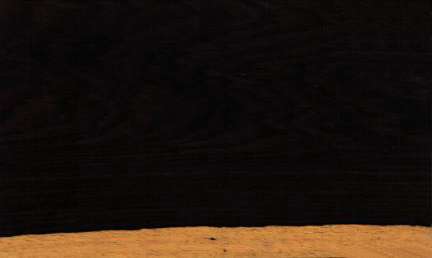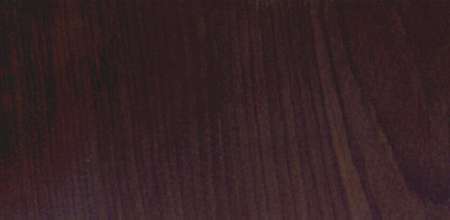  
African blackwood (Dalbergia melanoxylon)
Family: Leguminosae
Common names: African blackwood, African ebony, African grenadillo, African grenadilo, Babanus, Banbanus, Begboio, Black botany bay wood, Blackwood, Bokango, Cape damson, Chella, Chiku, Did, Driedoring, East African blackwood, Ebene, Funiti, Grenadilla, Grenadilla d'Afrique, Grenadille d'Afrique, Lurr, Motangu, Mozambique ebony, Mpingo, Mufulamamba, Mufunjo, Mugembe, Mugweze, Mugwiti, Muhati, Mukelete, Mukudziti, Mumhingwe, Mungara, Munhowe, Murgwiti, Murwiti, Opo, Pau preto, Pau-preto, Pingo, Poyi, Red, Rit, Rugbe, Samachi, Senegal ebony, Shami, Tareh, Umbambangwe, Zebra wood
Distributed in: Angola, Central African Republic, India, Kenya, Mozambique, Nigeria, Senegal, South Africa, Sudan, Tanzania, Uganda, Zimbabwe (Africa, Oceania and S.E. Asia)
Distribution overview: Widely distributed in Africa (in dry savannah forests), from Senegal across to Sudan, Eritrea and northern Ethiopia, Uganda and Kenya. To the south, it ranges from Angola to Zambia, Tanzania and Mozambique, as far south as the Transvaal. It tolerates a wide range of sites, especially on gravelly soils. A deciduous savannah tree or shrub, it will intertwine with other trees, and has a heavily branched, many stemmed growth habit. It is found in tropical lowlands and on various sites in subhumid and semiarid areas.In Tanzania it is found in low altitude savannah or woodlands around Morogoro and Itigi, down to the coast. Often it grows in areas where productive agriculture is impossible due to shallow, rocky soils. This is an indication of the tree's hardiness but may also indicate that it can not effectively compete when conditions are better.
Common uses: Agricultural implements, Beams, Bearings & bushings, Boxes and crates, Brush backs & handles, Building construction, Cabin construction, Carvings, Charcoal, Chemical derivatives, Concrete formwork, Construction, Decks, Drum sticks, Factory construction, Flooring, Food containers, Form work, Foundation posts, Framing, Fuelwood, Furniture, Handles, Heavy construction, Joists, Light construction, Mathematical instruments, Medicinal use, Musical instruments , Musical instruments, Organ pipes, Piano keys, Pianos , Porch columns, Rough construction, Shafts/Handles, Sounding boards, Sporting Goods, Tables, Tool handles, Turnery, Vehicle parts, Veneer: decorative, Violin bows, Violin, Walking sticks, Woodwork , Xylophones
Product sources: The ITTO reports that timber from this species is produced in limited volumes and is exported in small sized cants.The timber is exported in log form from East African ports. Log lengths are usually from 3 to 5 feet (0.9 to 1.5 m) and are often sold by importers only in log form and by the pound. Price range is in the expensive range.
Environment profile: Status has not been officially assessed
Tree size: Trunk diameter is 250-300 cm
Colors: the heart isPurple, Redand the sapwoodWhite to yellow, Yellow.The grain isStraight, the textureVery fineand the lusterSlightly lustrous
Natural durability: Susceptible to insect attack, Very durable
Odor: No specific smell or taste
Kiln Schedules: UK=B US=T2C2/T2C1 Fr=2
Kiln Drying Rate: Naturally dries quickly
Drying Defects: Severe end splitting, Severe surface checking
Ease of Drying: Requires slow and careful seasoning to prevent degrade.
Tree Identification: Bole/stem form is unknown
Comments: African blackwood is superior to Ebony for the manufacture of woodwind instruments because of its oily nature and high tolerance to fluctuations in climatic conditions. It responds almost as well as metals to tapping for screw threads. Tungsten/Carbide tipped saws are essential for conversion
Blunting Effect: Blunting effect on sawing dry wood is severe
Boring: May Blunt cutting edges and interfere with boring operations
Cutting Resistance: Easy to saw
Gluing: Satisfactory gluing properties
Nailing: Fairly Easy to Very Easy, Pre-Boring is necessary
Planing: Very Good to Excellent
Resistance to Impregnation: Resistant sapwood
Response to hand tools: Easy to machine
Steam bending: Very poor
Screwing: Possible if prebored
African blackwood responds to tapping for screw threads almost as well as metals.
; Turning: Good results
Polishing: Satisfactory; Staining: Finish is generally good
; Varnishing: Good;
- Numerical data Metric
- Numerical data English
- Strength properties
- References
 |
 |
 |
 |
| Item |
Green |
Dry |
Metric |
| Specific Gravity |
|
1,12 |
|
| Density |
|
1201 |
kg/m3 |
| Bending Strength |
1263 |
2042 |
kg/cm2 |
| Crushing Strength |
485 |
736 |
kg/cm2 |
| Hardness |
|
1333 |
kg |
| Impact Strength |
|
|
cm |
| Shearing Strength |
|
200 |
kg/cm2 |
| Stiffness |
156 |
172 |
1000 kg/cm2 |
| Tangential Shrinkage |
4 |
|
% |
| Radial Shrinkage |
2 |
|
% |
| Weight |
1153 |
1153 |
kg/m3 |
| Maximum Load |
|
|
cm-kg/cm3 |
| Toughness |
|
|
cm-kg |
| Static Bending |
|
|
kg/cm2 |
|
 |  |  |  | | Item | Green | Dry | English | | Bending Strength | 17974 | 29057 | psi | | Density | | 75 | lbs/ft3 | | Hardness | | 2940 | lbs | | Maximum Crushing Strength | 6899 | 10474 | psi | | Shearing Strength | | 2847 | psi | | Stiffness | 2230 | 2457 | 1000 psi | | Specific Gravity | | 1.12 | | | Weight | 72 | 72 | lbs/ft3 | | Radial Shrinkage | 2 | | % | | Tangential Shrinkage | 4 | | % | | Volumetric Shrinkage | 7 | | % | |
Density (dry weight) = 75+ lbs/cu. ft. 0
Max. crushing strength = high
Shrinkage, Tangential = very small
Shrinkage, Radial = very small
Hardness (side grain) = very hard
Density (dry weight) = 67-75 lbs/cu. ft.
Bending strength (MOR) = very high
Shrinkage, Volumetric = very small
Modulus of Elasticity (stiffness) = very high
Modulus of Elasticity (stiffness) = high
Bending strength (MOR) = high
Shrinkage, Volumetric = small
Shrinkage, Tangential = small
Shrinkage, Radial = small
Shearing strength (parallel to grain) = high
Modulus of Elasticity (stiffness) = medium
Bolza, E., Keating, W.G.,1972,African Timbers - the Properties, Uses and Characteristics of 700 Species,C.S.I.R.O. Div. of Building ResearchBolza, E.,1975,Properties and Uses of 175 Timber Species from Papua New Guinea and West,Irian,C.S.I.R.O. Div. Building Research Report,no.34Brown, W.H.,1969,Properties and uses of Tropical hardwoods in the United Kingdom. Part 1,Nonstructural properties and uses.,Conference on Tropical hardwoods SC-5/TN-5, Syracuse UniversityBrown, W.H.,1978,Timbers of the World No.1 Africa,TRADA, Red Booklet SeriesBryce, J.M.,1967,Commercial Timbers of Tanzania,Tanzanian Forestry Division Util. Sec. MoshiChudnoff, M.,1984,Tropical Timbers of the World,U.S.A. Department of Agriculture, Forest Service, Forest Products,Laboratory, Madison.Eggeling, W.J., Harris, C.M.,1939,Fifteen Uganda Timbers,Forest Trees and Timbers of the British Empire, Imperial Forestry,Institute, Oxford,Part 4Eggeling, W.J.,1940,Indigenous Trees of Uganda,Govt. Printer Entebbe UgandaFanshawe, D.B.,1962,Fifty Common Trees of Northern Rhodesia,Natural Resources Board and Forestry Department, NdolaFarmer, R.H.,1972,Handbook of Hardwoods,HMSOFocus on Trees:Dalbergia melanoxylon.Treeroots Network Social Forestry Report, Vol. 2, No. 1, Pages 6-7, June, 1993.Forest Products Research Laboratory, U.K.,1969,The Movement of Timbers,Forest Products Research Laboratory, Princes Risborough Technical Note,No.38Goldsmith, B., Carter, D.T.,1981,The Indigenous Timbers of Zimbabwe,Forestry Commission, Zimbabwe Research Bulletin No.9Grant, D.K.S.,1934,Some Local Timbers,Tanzania Forest DepartmentHaughton-Sheppard, P.C.,1958,A Note on African Blackwood - Dalbergia melanoxylon,Empire Forestry Review,37(3)93,pp327-30HMSO.1972.Handbook of Hardwoods.2nd Edition.Revised by R.H. Farmer.Department of the Environment, Building Research Establishment, Princes Risborough Laboratory, Princes Risborough, Aylesbury, Buckinghamshire.ITTO.1986.Tropical Timber Atlas, Volume 1 - Africa.International Tropical Timber Organization (ITTO) and Centre Technique Forestier Tropical (CTFT, 45bis, Avenue de la Belle Gabrielle, Nogent-sur-Marne Cedex, France.Keay, R.W.J.1989. Trees of Nigeria.Revised Version of Nigerian Trees. Clarendon Press, Oxford.Kline, M. 1981. Dalbergia melanoxylon - African blackwood. In A Guide to Useful Woods of the World, Flynn Jr., J.H., Editor. King Philip Publishing Co., Portland, Maine. Page 130.Kukachka, B.F.,1970,Properties of Imported Tropical Woods,Forest Research Paper FPL 125Lincoln, W.A. 1986. World Woods in Color. Linden Publishing Co. Inc., Fresno, California.Normand, D.,1960,Les Ebenes dans le Monde,Bois et Forets des Tropiques,No.72,pp15-22Pardy, A.A.,1955,Notes on Indigenous Trees and Shrubs of S.Rhodesia - Dalbergia melanoxylon,Ministry of Agriculture and Lands S. Rhodesia Bulletin,No.1852Patterson, D.N.,1963,The strength of Kenya timbers, their derivation and application,Kenya Forestry Department Research Bulletin,No.23Rendle, B.J.,1969,World Timbers (3 Vols.,Ernest Benn Ltd. LondonSallenave, P.,1971,Proprietes Physiques et Mecaniques des Bois Tropicaux (Deuxieme,Supplement,C.T.F.T.Scott, M.H.,1950,Notes on the more Important African Timbers Imported into the Union with,Special Ref. to Port. E.A. Species,Journal of the South African Forestry Association,No.19,pp18-62,[South,African Forestry Journal]Tack, C.H.,1969,Uganda Timbers,Govt. Printer UgandaTakahashi, A.,1978,Compilation of Data on the Mechanical Properties of Foreign Woods (Part,III) Africa,Shimane University, Japan, Research Report on Foreign Wood No. 7Tanzania - Timber Marketing Co. Ltd.,1978,Timber from TanzaniaTanzania Forest Department,1966,Dalbergia melanoxylon (African Blackwood, Mpingo,Tanzania Forest Div. Util. Sec. Moshi - Timbers of TanganyikaTanzania Forest Division,1966,Kiln Drying Schedules for Tanzania Timbers Technical Note no.38,Tanzania Forest Div. Util. Sec. MoshiTimber Development Association,1948,Some New Timbers and Their Uses No. 34,Timber Development Association Limited, London [TRADA]Timber Information Assoc. Ltd.,1947,Notes on East African Timbers,TRADA, Timber Information, No.28Wimbush, S.H.,1950,Catalogue of Kenya Timbers,Govt. Printer Nairobi KenyaWood, B., Calnan, D.,1976,Toxic Woods,British Journal of Dermat 94 Suppl. 13
|










